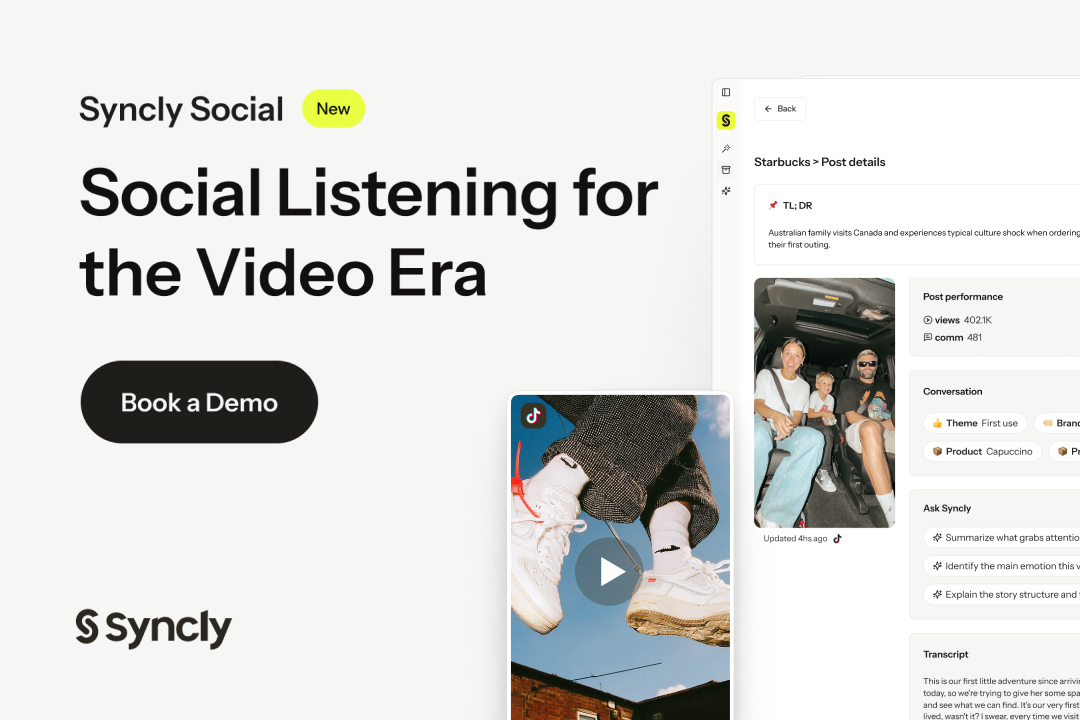The New Metrics for AI Search
📊 Learn which KPIs to track for AI search visibility, and stop ghosting customers on social media.

Hey there 🧠
Ready for another day of staying ahead of the competition in the Growth race?
Oh and before we go ahead! If your friend sent this to you, be sure to subscribe here! So you don’t miss out on any editions.
Partnership with Syncly
Old social listening is dead. The new video social listening is here.

Social media is all about videos now, but traditional social listening is still deaf to videos.
Syncly Social is an AI-powered social listening tool for TikTok that actually hears every spoken brand or product mention.
With Syncly Social, you can finally:
- Catch every spoken brand mention: Instantly find every brand mention on TikTok, tagged or untagged, and gain complete visibility of your brand perception.
- Identify on-brand influencers & affiliates: Engage with influencers and affiliates who already love your brand. Filter creators by demographics like race, age, and location to build targeted campaigns.
- Competitive Analysis: Understand what creators are saying about competition, which videos are taking off, and how their brand sentiment compares to yours.
Top brands like Kosas, Burberry, and Calvin Klein are using Syncly Social to navigate the new era of social media.
Book a call with Syncly Social’s founders today, and claim your free, in-depth TikTok analysis!
💡 Track These KPIs to Turn AI Searches into a Content Strategy
Clicks and backlinks are no longer the main indicators of content success. With LLMs like ChatGPT and Gemini becoming the first stop for many users, the focus has shifted from clicks to citations. If your brand is not mentioned in AI-generated responses, you risk becoming invisible in this new search landscape.
1️⃣ Track Brand Mentions: If your company is missing from queries like “best project management platforms,” you are already behind. Monitor which query types you appear in. If you show up only in late-stage comparisons and not in early “what is” queries, you need to strengthen your thought leadership content.
2️⃣ Monitor Adjectives Used by AI: LLMs use descriptors such as “trusted,” “expensive,” or “hard to use,” based on what they learn from your online footprint. If you are labeled “complex,” publish guides that make your product easier to understand. If you are called “innovative,” reinforce that narrative across your campaigns to strengthen perception.
3️⃣ Compare Competitor Mentions: If your brand appears in 30 percent of relevant answers but your main competitor shows up in 70 percent, you are losing visibility and authority. Identify which queries favor your competitors and what type of content earns them those mentions. Use that data to refine your messaging and improve credibility.
4️⃣ Build Authority with Structured Content: LLMs cite sources they find trustworthy and organized. Publish reports, case studies, and FAQ pages that clearly explain topics. The more structured your content is, the more likely it is to be referenced by AI tools.
The Takeaway
AI-driven search is changing how visibility and influence work. Mentions reveal awareness, adjectives shape perception, and competitor share shows authority. Tracking these KPIs helps you understand where you stand and how to make your brand more discoverable in the age of AI search.
💡 How Long Can You Ghost Your Customers on Social Media
Insights from stackedmarketer
Ghosting might be fine when your Tinder match owns six reptiles and says, “let’s vibe,” but ignoring your customers on social media is a serious problem. It can quickly damage your brand reputation and cost you valuable customers who expect prompt and thoughtful engagement.

Almost a third of all customers now expect you to reply to their messages within one hour. Another 25 percent expect a response within six hours, while 17 percent are willing to wait up to 12 hours. Beyond that, 72 percent of customers believe that a response delay is unacceptable.
1️⃣ Why It Matters: Social media is no longer a place for passive posting. It has become a key customer service channel where people reach out expecting immediate attention. Direct messages are now a frontline space for customer interaction. When marketing campaigns encourage users to “DM us,” customer service teams must be ready to respond. A slow or missed reply can lead to lost trust, poor reviews, and missed opportunities for conversion.
2️⃣ What You Can Do: If your team cannot respond immediately, use auto-replies to set expectations clearly. Acknowledge every message, outline response times, and route inquiries to live agents quickly. Automate replies for common questions, but make sure more complex issues are handled by real people. Integrate your marketing and service teams to ensure that customer queries are addressed efficiently. Use monitoring tools to track brand mentions and prevent unanswered messages from slipping by.
The Takeaway
Fast responses are no longer optional. They are a reflection of how much you value your audience. By being proactive, setting clear expectations, and staying responsive, you build trust, keep engagement strong, and show customers that your brand truly listens.
As we prepare more "Growthful" content, we'd love to hear your thoughts on today's edition! Feel free to share this with someone who would appreciate it. 🥰